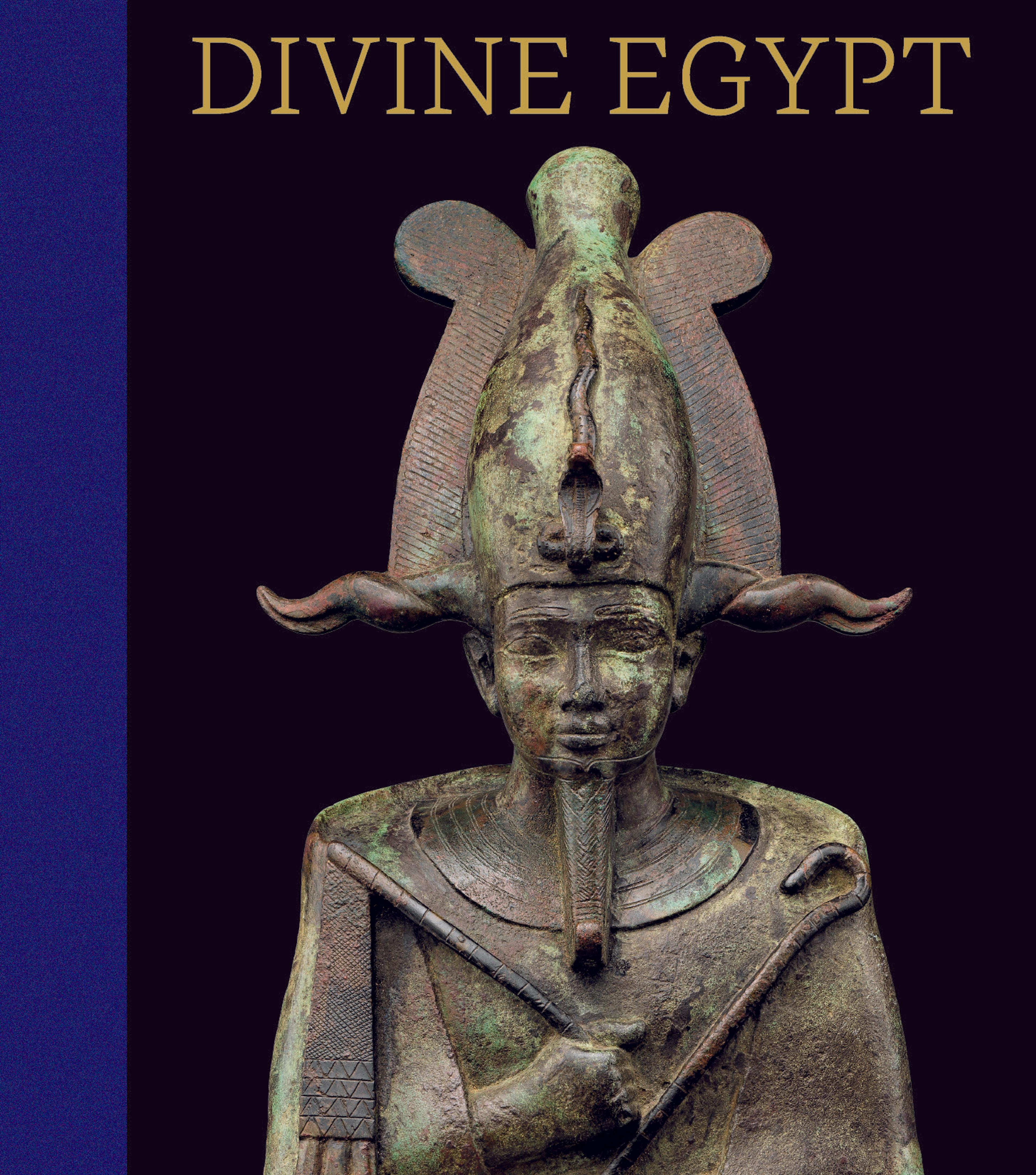Sib sphinx for a barque
Images of gods were carried out of temples on festival days on processional barque-shrines. Most often the image itself was concealed in a shrine, but sculpted heads at the prow and stern identified the god to the populace, small royal statuary surrounded and protected the god hidden in the shrine, and other gods including the one represented here rode at the prow.
Solar hymns of about 1400 B.C. identify this divinely poised and alert animal as a "sib," and describe it as "trampling the sun god's enemies." At the prow of the portable barque, its expressive and magical form telegraphed to the crowds the otherworldly nature of the appearance and the forces surrounding it. Alongside the sphinx rode Maat and Hathor, daughters of Re, and with the sib they constituted an entourage inherited from the voyage of the solar barque through the day and night sky. While the goddesses attended to the guidance of the barque, the sib dealt terrifyingly with any enemy that dared to approach.
The barque sphinx is a standard, that is to say it appears on a platform meant to be raised on a pole. Two cobras, heads broken, undulate alongside the animal on the platform, reinforcing the dangerous power of the sib. The sphinx itself is a composite of human and lion, the identity of the latter clearly indicated by the long striated mane depicted on the animal's chest. But this very beautiful example with elongated body, extremely slim and high hips and backward thrusting legs probably alludes to the dangerous grace of leopards and panthers, who are associated with the solar barque voyage, and also recalls the jackal standard.
The human head of the animal has a truly ethereal beauty: narrowed slightly tilted eyes with full lids in a perfect oval smiling face. This is one strain in the art of the Saite period that in subsequent centuries came to be the dominant mode for depicting the supernaturally perfect features of kings and gods.
Solar hymns of about 1400 B.C. identify this divinely poised and alert animal as a "sib," and describe it as "trampling the sun god's enemies." At the prow of the portable barque, its expressive and magical form telegraphed to the crowds the otherworldly nature of the appearance and the forces surrounding it. Alongside the sphinx rode Maat and Hathor, daughters of Re, and with the sib they constituted an entourage inherited from the voyage of the solar barque through the day and night sky. While the goddesses attended to the guidance of the barque, the sib dealt terrifyingly with any enemy that dared to approach.
The barque sphinx is a standard, that is to say it appears on a platform meant to be raised on a pole. Two cobras, heads broken, undulate alongside the animal on the platform, reinforcing the dangerous power of the sib. The sphinx itself is a composite of human and lion, the identity of the latter clearly indicated by the long striated mane depicted on the animal's chest. But this very beautiful example with elongated body, extremely slim and high hips and backward thrusting legs probably alludes to the dangerous grace of leopards and panthers, who are associated with the solar barque voyage, and also recalls the jackal standard.
The human head of the animal has a truly ethereal beauty: narrowed slightly tilted eyes with full lids in a perfect oval smiling face. This is one strain in the art of the Saite period that in subsequent centuries came to be the dominant mode for depicting the supernaturally perfect features of kings and gods.
Artwork Details
- Title: Sib sphinx for a barque
- Period: Late Period, Saite Period
- Dynasty: Dynasty 26
- Date: ca. 664–525 BCE
- Geography: From Egypt
- Medium: Leaded bronze
- Dimensions: H. 20.5 × L. 16 × W. 4.5 cm (8 1/16 × 6 5/16 × 1 3/4 in.); H. (with tang): 23.3 cm (9 3/16 in.)
- Credit Line: Purchase, Gift of Henry Walters, by exchange; Liana Weindling Gift, in memory of her mother, and Lila Acheson Wallace Gift, 2011
- Object Number: 2011.96
- Curatorial Department: Egyptian Art
More Artwork
Research Resources
The Met provides unparalleled resources for research and welcomes an international community of students and scholars. The Met's Open Access API is where creators and researchers can connect to the The Met collection. Open Access data and public domain images are available for unrestricted commercial and noncommercial use without permission or fee.
To request images under copyright and other restrictions, please use this Image Request form.
Feedback
We continue to research and examine historical and cultural context for objects in The Met collection. If you have comments or questions about this object record, please contact us using the form below. The Museum looks forward to receiving your comments.
